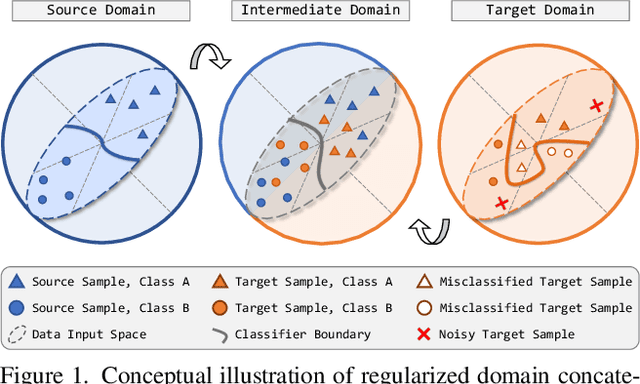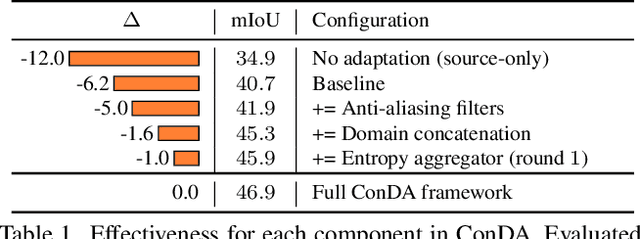ConDA: Unsupervised Domain Adaptation for LiDAR Segmentation via Regularized Domain Concatenation
Paper and Code
Nov 30, 2021



Transferring knowledge learned from the labeled source domain to the raw target domain for unsupervised domain adaptation (UDA) is essential to the scalable deployment of an autonomous driving system. State-of-the-art approaches in UDA often employ a key concept: utilize joint supervision signals from both the source domain (with ground-truth) and the target domain (with pseudo-labels) for self-training. In this work, we improve and extend on this aspect. We present ConDA, a concatenation-based domain adaptation framework for LiDAR semantic segmentation that: (1) constructs an intermediate domain consisting of fine-grained interchange signals from both source and target domains without destabilizing the semantic coherency of objects and background around the ego-vehicle; and (2) utilizes the intermediate domain for self-training. Additionally, to improve both the network training on the source domain and self-training on the intermediate domain, we propose an anti-aliasing regularizer and an entropy aggregator to reduce the detrimental effects of aliasing artifacts and noisy target predictions. Through extensive experiments, we demonstrate that ConDA is significantly more effective in mitigating the domain gap compared to prior arts.
 Add to Chrome
Add to Chrome Add to Firefox
Add to Firefox Add to Edge
Add to Edge